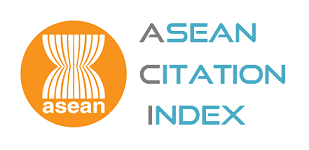A STUDY OF THE RELATIONSHIP BETWEEN THE SUPER LEADERSHIP OF SCHOOL ADMINISTRATORS AND THE EFFECTIVENESS OF SCHOOLS UNDER THE SECONDARY EDUCATIONAL SERVICE AREA OFFICE LOEI–NONGBUA LAM PHU
Keywords:
Super Leadership, Effectiveness of Schools, Educational AdministrationAbstract
The objectives of this research were 1) to examine the level of super leadership of school administrators, 2) to explore the level of effectiveness of schools, and 3) to determine the relationship between the super leadership of school administrators and the effectiveness of schools under the Loei–Nongbua Lam Phu Secondary Educational Service Area Office. The sample consisted of 335 government teachers, selected through Krejcie and Morgan’s Table, and multi–stage random sampling. The instruments comprised sets of the 5–level rating scale questionnaires: 1) One was on a super leadership of school administrators, with the item objective congruence (IOC) at 1.00, an item discriminative power ranging from 0.434 to 0.760, and the reliability of 0.967; and 2) another was the effectiveness of schools, with the IOC at 1.00, item discriminative power ranging from 0.533 to 0.808, and the reliability of 0.954. Statistics for data analysis included mean, standard deviation, and Pearson's product–moment correlation coefficient.
The research findings showed that 1) the level of super leadership of school administrators was rated at a high level, considering each aspect arranged in descending order from high to low as follows: an exemplary of self–leadership, stimulation of personnel to create self–goal setting, promoting self–leaders through teamwork, creating positive thinking model, improving self–leader through rewarding and providing constructive criticism, facilitating to create a culture of self–leaders, and being self–leaders, 2) The level of effectiveness of schools was positive at a high level, including transforming and developing environmental resources both internally and externally, problem–solving within schools, improving students’ learning achievement, and developing students’ positive attitudes, and 3)The relationship between the super leadership of school administrators and the effectiveness of schools was at a high level in the positive direction (r = 0.847), with the .01 level of significance.
References
จัตุพงษ์ เกษมสุข. (2562). ปัจจัยที่ส่งผลต่อภาวะผู้นำเหนือผู้นำของผู้บริหารโรงเรียนเอกชน สังกัดสำนักงานคณะกรรมการส่งเสริมการศึกษาเอกชน. วารสารวิจัยมหาวิทยาลัยราชภัฏหมู่บ้านจอมบึง สาขามนุษย์ศาสตร์และสังคมศาสตร์, 7(1), 37–51.
จตุรภัทร ประทุม. (2559). ปัจจัยที่ส่งผลต่อประสิทธิผลของสถานศึกษา สังกัดสำนักงานเขตพื้นที่การศึกษามัธยมศึกษา เขต 27. วารสารวิทยบริการ มหาวิทยาลัยสงขลานคนรินทร์, 27(2), 119–130.
ชูตระกูล ไชยเสนา. (2560). ภาวะผู้นำการเปลี่ยนแปลงกับวัฒนธรรมองค์กรขององค์การบริหารส่วนจังหวัดสิงห์บุรี. วารสารมหาวิทยาลัยราชภัฏธนบุรี, 11(1), 46–59.
ดาวรุวรรณ ถวิลการ. (2558). “ภาวะผู้นำเหนือผู้นำ” แบบภาวะผู้นำแห่งศตวรรษที่ 21. วารสารบริหารการศึกษา มหาวิทยาลัย ขอนแก่น, 11(2), 23–35.
ธิดารัตน์ เอี่ยมเซี่ยม. (2565). ภาวะผู้นำเหนือผู้นำของผู้บริหารสถานศึกษา สังกัดสำนักงานเขตพื้นที่การศึกษาประถมศึกษาระยอง เขต 2. วารสารนาคบุตรปริทรรศน์ มหาวิทยาลัยราชภัฏนครศรีธรรมราช, 14(1), 102–110.
นิลุพัฒน์ จิตรสง่าวงศ์. (2559). ความสัมพันธ์ระหว่างภาวะผู้นำเหนือผู้นำของผู้บริหารสถานศึกษา แรงจูงใจในการปฏิบัติงานของครูกับประสิทธิผลของสถานศึกษา สังกัดสำนักงานเขตพื้นที่การศึกษาประถมศึกษาฉะเชิงเทรา เขต 1. วิทยานิพนธ์ กศ.ม. ชลบุรี: มหาวิทยาลัยบูรพา.
บุญชม ศรีสะอาด. (2554). การวิจัยเบื้องต้น. (พิมพ์ครั้งที่ 9). กรุงเทพฯ: สุริยาสาส์น.
วิโรจน์ สารรัตนะ. (2555). แนวคิด ทฤษฎี และประเด็นเพื่อการบริหารทางการศึกษา. (พิมพ์ครั้งที่ 8). กรุงเทพฯ: ทิพย์วิสุทธิ์.
สุภาวดี บุตตะวงค์. (2560). ความสัมพันธ์ระหว่างภาวะผู้นำเหนือผู้นำกับประสิทธิผลของโรงเรียน สังกัดสำนักงานเขตพื้นที่การศึกษาประถมศึกษาจันทบุรี เขต 1. วิทยานิพนธ์ ศษ.ม. ชลบุรี: มหาวิทยาลัยบูรพา.
สำนักงานเขตพื้นที่การศึกษามัธยมศึกษาเลย หนองบัวลำภู. (2565). รายงานผลดำเนินงานรอบ 6 เดือน (ต.ค. 65–มี.ค. 66) ปีงบประมาณ พ.ศ. 2566. เลย: กลุ่มนโยบายและแผน สำนักงานเขตพื้นที่การศึกษามัธยมศึกษาเลย หนองบัวลำภู.
สุทิน สุขกาย. (2562). การศึกษาประสิทธิผลของสถานศึกษา สังกัดสำนักงานเขตพื้นที่การศึกษาประถมศึกษาศรีสะเกษ เขต 1. วิทยานิพนธ์ ค.ม. อุบลราชธานี: มหาวิทยาลัยราชภัฏอุบลราชธานี.
สมบูรณ์ ศิริสรรหิรัญ. (2559). ภาวะผู้นำของนักบริหารการศึกษามืออาชีพในศตวรรษที่ 21. วารสารบริหารสถานศึกษา มหาวิทยาลัยเกษตรศาสตร์, 1(1), 31–49.
อนุวัตร ศรีพระนาม. (2560). ภาวะผู้นำเหนือผู้นำของผู้บริหารสถานศึกษา สังกัดสำนักงานเขตพื้นที่การศึกษามัธยมศึกษา เขต 25. วารสารศึกษาศาสตร์ ฉบับวิจัยบัณฑิตศึกษา มหาวิทยาลัยขอนแก่น, 11(2), 256–264.
อมรา ไชยดำ. (2559). ประสิทธิผลของสถานศึกษาในสังกัดสำนักงานเขตพื้นที่การศึกษามัธยมศึกษา เขต 27. วารสารบัณฑิตศึกษา มหาวิทยาลัยราชภัฏสกลนคร, 13(61), 209–224.
อรอุมา ใกล้ฝน. (2566). ภาวะผู้นำทางวิชาการของผู้บริหารสถานศึกษาที่ส่งผลต่อประสิทธิผลของโรงเรียน สังกัดสำนักงานเขตพื้นที่การศึกษาประถมศึกษาสกลนคร เขต 2. วารสารบัณฑิตศึกษา มหาวิทยาลัยราชภัฏสกลนคร, 20(89), 79–91.
Krejcie, R. V., & Morgan, D. W. (1970). Determining Sample Size for Research Activities. Educational and Measurement, 30(3), 607–610.
Ulrich, D. (1996). The leader of the future: New visions, strategies, and practices for the next era. San Francisco: Jossey–Bass.
Manz, C. C., & Sims, H. P. (2001). The New Superleadership Leading others to Lead Themselves. San Francisco: Berrett–Koehler.
Mott, P. E. (1966). The Characteristic of effective organization. New York: Mcmillan.
House, R. J., & Mitchell, T. R. (1974). Path–goal theory of leadership. Journal of Contemporary Business, 9, 81–97.
Downloads
Published
How to Cite
Issue
Section
License
Copyright (c) 2024 Journal of Graduate School Sakon Nakhon Rajabhat University

This work is licensed under a Creative Commons Attribution-NonCommercial-NoDerivatives 4.0 International License.
บทความทุกบทความที่ตีพิมพ์ในวารสารบัณฑิตศึกษา มหาวิทยาลัยราชภัฏสกลนคร ถือว่าเป็นลิขสิทธิ์ของบัณฑิตวิทยาลัย มหาวิทยาลัยราชภัฏสกลนคร










